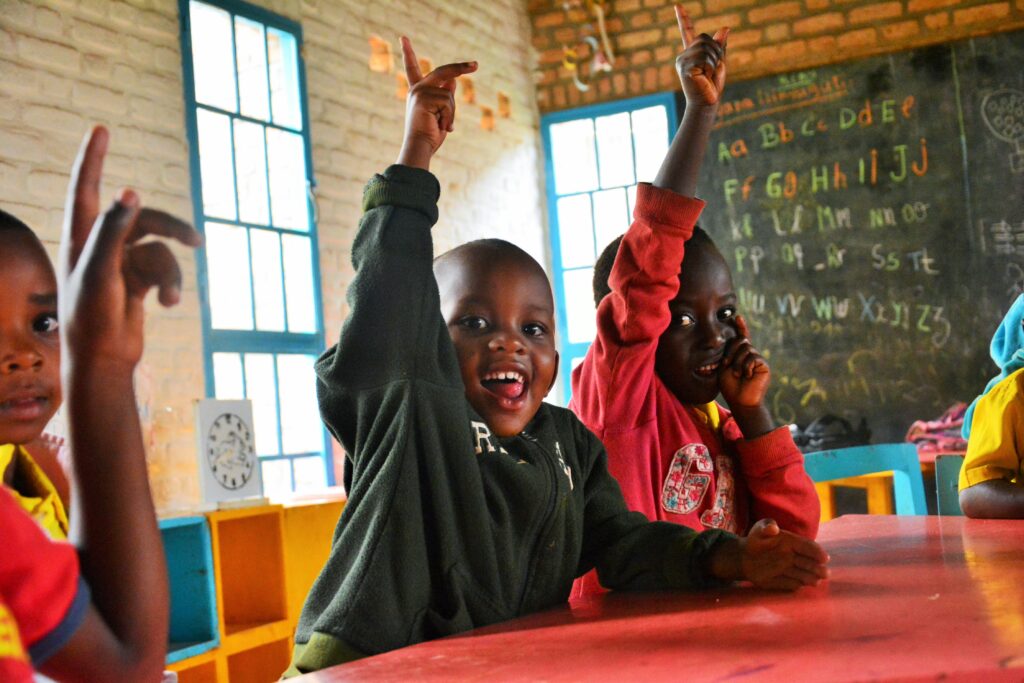Giga, a joint initiative between UNICEF and ITU to connect all of the world’s schools to the internet by 2030, has partnered with the Ethereum Foundation and the Government of Rwanda to use staking to finance connectivity.
Staking Ether is the process of locking 32 ETH and earning rewards by running software in order to help secure the Ethereum network. Together with the implementing partner, Launchnodes, Giga started with the pilot in December 2021 with the aim of demonstrating the technical viability of staking in providing a recurring revenue stream for financing school connectivity.
Ethereum staking can be one of the solutions to making it possible to pay for ongoing internet connectivity costs for schools in Rwanda.
One of the persistent challenges for connectivity is to cover and sustain the connectivity costs. Just as one pays for Internet connectivity at home or on mobile phones, ongoing expenses for connected schools need to be paid for. This Ethereum staking experiment would enable us to try out a new financing model to establish whether staking, in combination with other business models is a viable option to pay for schools’ ongoing internet connectivity expenses.
As part of this first-of-a-kind project, Giga has started running an Ethereum validator node to stake Ether, with the intent to use the staking rewards to pay for Internet connectivity in schools in Rwanda.
Giga has already done impactful work in Rwanda, transforming lives one school at a time in rural areas. In 2019, Giga collaborated with the government of Rwanda to provide broadband Internet connectivity to 63 schools, of which 50 schools were in the rural Eastern Province and 13 in refugee camps that had no electricity. Giga continues further collaborations with the government of Rwanda to connect all 1,796 schools, along with their 1.3 M students and teachers to a continuous stream of broadband internet. For an overview of the connectivity status of schools in Rwanda, check out the interactive map.
How does it work?
The Ethereum network has moved from a Proof-of-Work consensus mechanism to a Proof-of-Stake consensus mechanism. This move happened last month in mid-September in a highly anticipated event called “The Merge”. One major benefit of this, along with the excitement behind the adoption of the new consensus mechanism, is that it effectively eliminated the network’s energy consumption. Certain blockchains have come under heavy criticism due to their energy-intensive operations, especially considering the pertinent issues of climate control and sustainability. This move of the Ethereum blockchain to Proof-of-Stake consensus mechanism is expected to be over 99.9% more energy efficient, and hence a more environmentally sustainable and friendly solution.
If we dive deeper into how the Proof of Stake consensus mechanism differs from the original Proof of Work mechanism, it can be summarized that previously it was needed to deploy as much computing power as possible to earn rewards. This process, called “mining” leads to an energy intensive competition to add new blocks to the blockchain. With Ethereum’s new Proof of Stake consensus mechanism, the blockchain will not need miners, and instead will randomly select a group of validators to add new blocks to the blockchain. To become a validator and to earn rewards by helping to secure the network, it is required to deposit or “stake” 32 ETH (~ 43k USD at the time of writing).
As part of this experiment, the Ethereum Foundation has donated the initial capital of 32 ETH to the UNICEF Venture Fund, allowing Giga to run a validator node hosted in a cloud infrastructure, but there are different modalities available for stakers with varying needs.
The Rwandan Government is a global pioneer in its willingness to innovate with this new form of financing. The rewards earned by staking Ether on the Ethereum blockchain will go on to pay for school connectivity in Rwanda. In particular, the involvement of the Ministry of ICT and the Rwanda Information Society Authority (RISA), have been instrumental in making this project possible.
One of the many advantages of using blockchain technology is that it is transparent, immutable, secure, decentralized and all the transactions along with the information that takes place on the blockchain are accessible to anyone who wants to verify them. The use of blockchain technology also automates the process via smart contracts. Since the information is freely available, it further implies that the staking rewards can be viewed and even monitored in real-time by anyone who is interested. You can see how our validator node is doing here.
At the time of writing in early October 2022, the yearly expected rewards for this pilot are around 4%, and since launching the node on May 28th 2022, this experiment has generated 0.42799 ETH (or ~550 USD). However, what’s exciting in this experiment isn’t how much reward-value is being generated by this one particular node, but rather the potential for further investment.
Through the implementation of this experiment, Giga’s next steps are to investigate offering an impact investment vehicle for any institutional or retail investor who’s interested in staking their unused Ethereum to support Giga’s mission. The beauty of this mechanism would be that it not only helps Giga cover operational expenses, but at the end of the predetermined staking period, the initial ETH can be returned to the investor.
For the time being, this project has been a successful experiment in understanding and making the technical aspects of the system work. We’re extremely happy to find such a collaborative atmosphere and fertile soil for this kind of innovation in Rwanda. We are further looking forward to turning this into a more market-ready product for Giga supporters of all sizes to collectively move towards our goal of connecting every school in the world to the internet by 2030.

